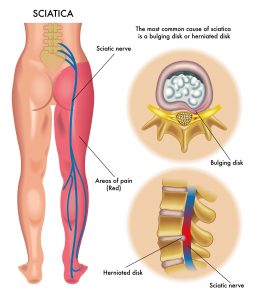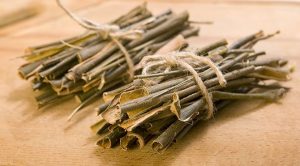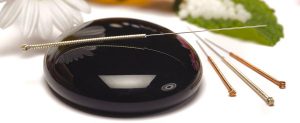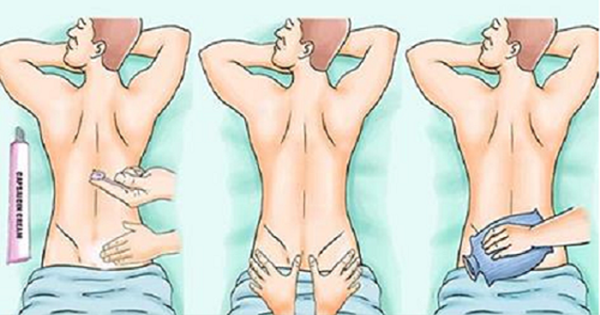Have you ever wake up and experienced the feeling of terrible pain starting from your upper thighs all the way to your feet? Or, the annoying pain in the lower back which will not go away not matter what you try?
This could indicate that you are suffering from sciatic nerve pain, known as sciatica, which causes painful throbbing in the limbs and lower back.
 Sciatica is pain caused by irritation or compression of the sciatic nerve. It usually affects only one part of the body but tends to be severe and debilitating. The pain usually extends from the lower back to the rear of the thigh and down through the leg.
Sciatica is pain caused by irritation or compression of the sciatic nerve. It usually affects only one part of the body but tends to be severe and debilitating. The pain usually extends from the lower back to the rear of the thigh and down through the leg.
It can be accompanied by symptoms like burning or tingling down the leg, shooting pain that causes difficulty standing up or sitting down, and numbness and weakness down the affected leg and even in the toes.
A slipped or herniated disc is considered as the main cause of sciatica.
However, there are other factors which can cause this condition including, spinal stenosis, degenerative disc disease, pregnancy, isthmic spondylolisthesis, piriformis syndrome, spinal injury or infection.
Today, there are many methods used for treating sciatica, but most of them provide short-term relief.
What’s more, most of the steroid injections can contribute to severe side effects.
But, fortunately you can decrease the irritated sciatic nerve pressure and inflammation thanks to some natural therapies and homemade remedies, and the problem will most probably disappear within six weeks.
10 homemade remedies for alleviation of the painful sciatica:
1. Hot or Cold Compresses

Using hot or cold compresses can help relieve sciatica pain and inflammation.
Cold compress relieves the pain and reduces the swelling around the nerve while hot compress can relax those tense muscles which are responsible for pressing the sciatic nerve.
However, you can combine the hot and cold compress. You should start with the hot treatment, and end with the cold one. Make sure to use steamed towel for the hot treatment in order to make it more effective.
Place a hot or cold pack on the affected area for 15 to 20 minutes.
Do this every few hours until you get relief.
Note: People who have problems with blood circulation shouldn’t use cold compresses.
2. Massages

Besides its ability to relieve sciatica pain, massage therapy can help your body to heal itself, especially if a muscle spasm is the cause of the problem.
Plus, it helps release tension, stimulate circulation and increase the range of motion.
- Massage the affected area with St. John’s wort oil 2 or 3 times a day until you get relief. St John’s wort has anti-inflammatory properties that help relieve sciatica pain and inflammation.
- Another option is to add 3 tablespoons of nutmeg powder to 1 cup of sesame oil. Heat the mixture. Allow it to cool and massage the affected area with it when it is comfortably warm. Do this a few times a day for a few weeks
- You can also consider trigger-point massage therapy at least once daily. Pain in the lower back, buttocks and side of the thighs is often associated with trigger points in the gluteus minimus as well as medius muscles.
3. Capsaicin cream

Cayenne pepper contains an active ingredient called capsaicin that works as a natural pain reliever. It helps deplete the levels of a neurotransmitter called substance P, which transports pain signals.
Buy a cream or ointment containing 0.025% to 0.075% capsaicin.
Apply it on the affected area up to 4 times a day, at least for 1 week.
Note: As it may initially cause a burning sensation you should not apply capsaicin cream or ointment on a broken skin.
4. Exercises
In addition to rest, maintaining normal activity is highly beneficial for dealing with sciatica.
A day or two after a sciatica flare up, you can start a regular exercise program to strengthen the abdominal and back muscles. Strengthening the core muscles helps facilitate quick recovery.

You can do Knee to Chest Stretch to help reduce the irritation of the sciatic nerve and improve flexibility of your lower back.
- Lie on your back on a mat with your feet straight and hip-width apart.
- Keep your upper body relaxed and bend your right knee upwards with an inhale.
- Clasp your hands behind the thigh and gently pull it towards your chest as far as is comfortable.
- Keep the other leg flat on the surface.
- Hold this position for 20 seconds with controlled deep breaths and then lower your leg gently.
- Switch legs and repeat.
- Repeat 3 to 5 times.
- Finally do this exercise with both the legs 3 to 5 times.
You can also do exercises like spinal rolling, knees rocking, floor twists, backblock, back extensions, sciatic-mobilizing stretches and certain yoga poses like the cat-cow pose and pigeon pose to help relieve sciatica and lower back pain. You can try spinal decompression exercises as well.
Note: You should consult your doctor in order to get the proper program for your exercising.
5. Valerian Root

The valerian root is considered as extremely effective at reducing sciatica pain caused by a muscle spasm and relieving chronic nerve pain. The herb contains volatile oils that help relax your muscles and ease tension. It is popularly used as a sleeping aid as well.
- Take 150 mg of valerian root supplement 3 times a day for a few weeks. Consult your doctor first.
- You can also drink valerian tea prepared by steeping 1 teaspoon of dried valerian root in 1 cup of hot water for 10 minutes. Drink this herbal tea several times a week for a few weeks
7. Turmeric
Turmeric can be used in sciatica treatment due to its strong anti-inflammatory properties. Curcumin which is the active compound in turmeric can significantly reduce the nerve pain and inflammation.
- Add 1 teaspoon of turmeric to 1 cup of milk. You can also add a small cinnamon stick. Boil the solution. Sweeten this healthy drink with honey. Consume this amazing drink 1-2 times a day until you see some improvements.
- Another option is to take 250 to 500 mg turmeric supplements 3 times a day for several weeks. But, before you decide to take them, make sure to consult your doctor.
Note: Turmeric is not recommended for people who take diabetes medication and blood thinners, and for those who suffer from gallstones.
7. White Willow bark

White willow bark contains olic glycosides with salicin, responsible for its potent anti-inflammatory and analgesic properties. It is recommended to take 240mg of salicin or 120mg of white willow supplement a day, for a few weeks. However, before taking the supplements, make sure to consult your doctor.
8. Fenugreek Seeds

- Grind a handful of fenugreek seeds.
- Boil the powder with enough milk to get a mushy paste.
- Apply it on the aching area as a poultice.
- Leave it on for a few hours before rinsing it off.
- Repeat daily until you get relief.
9. Acupuncture

Acupuncture is another effective natural treatment to relieve sciatica pain, relax the muscles and help your body heal itself.
Another theory is that by stimulating certain acupuncture points, the central nervous system is also stimulated, in turn triggering the release of chemicals that either change the perception of pain or produce a sense of well-being.
A 2009 study published in the Journal of Traditional Chinese Medicine found that warmed acupuncture with heated needles helped improve sciatica pain. In fact, 17 of the 30 participants got complete relief from sciatica after acupuncture therapy.
10. Spinal manipulation

Did you know that chiropractic care is considered as one of the best methods for treating neck and back pains? The chiropractic spinal manipulation includes a variety of techniques involving rapid and short thrusts which can soothe the nerve irritation that causes the inflammation and other sciatica symptoms.
A 2010 study published in the Journal of Manipulative and Physiological Therapeutics found that spinal manipulation benefited 60% of the study participants suffering from sciatica to the same degree as a surgical intervention could have provided.
Consult a doctor of chiropractic medicine for proper treatment, depending on the exact cause of your sciatica pain.
Additional Tips
- Do not make sudden movements.
- Adopt a good posture to relieve pressure on your lower back.
- Practice proper lifting techniques with your back straight and knees bent.
- Sleep on a mattress that is neither too firm nor too soft.
- Get regular exercise, but do not engage in intense exercise.
- Avoid cigarette smoking as it promotes disc degeneration.
- Try other herbal remedies, such as devil’s claw (1,500 to 2,000 mg twice daily). An alcohol-based extract prepared from the leaves of parijat, also called harshiangar (scientific name, Nyctanthes arbor tristis), has also been found useful in treating sciatica.These herbs have anti-inflammatory and tranquilizing properties. Devil’s claw may interfere with certain medications and may not be suitable for those suffering from peptic ulcers. Before taking an herbal remedy, check with your doctor for advice on dosage and suitability.
- Consider taking vitamin C, calcium and magnesium supplements after consulting your doctor.
Resources:
http://www.jmptonline.org/article/S0161-4754%2810%2900211-3/abstract
http://www.sciencedirect.com/science/article/pii/S0254627209600315
http://www.ncbi.nlm.nih.gov/pubmed/6482481
http://umm.edu/health/medical/reports/articles/back-pain-and-sciatica
